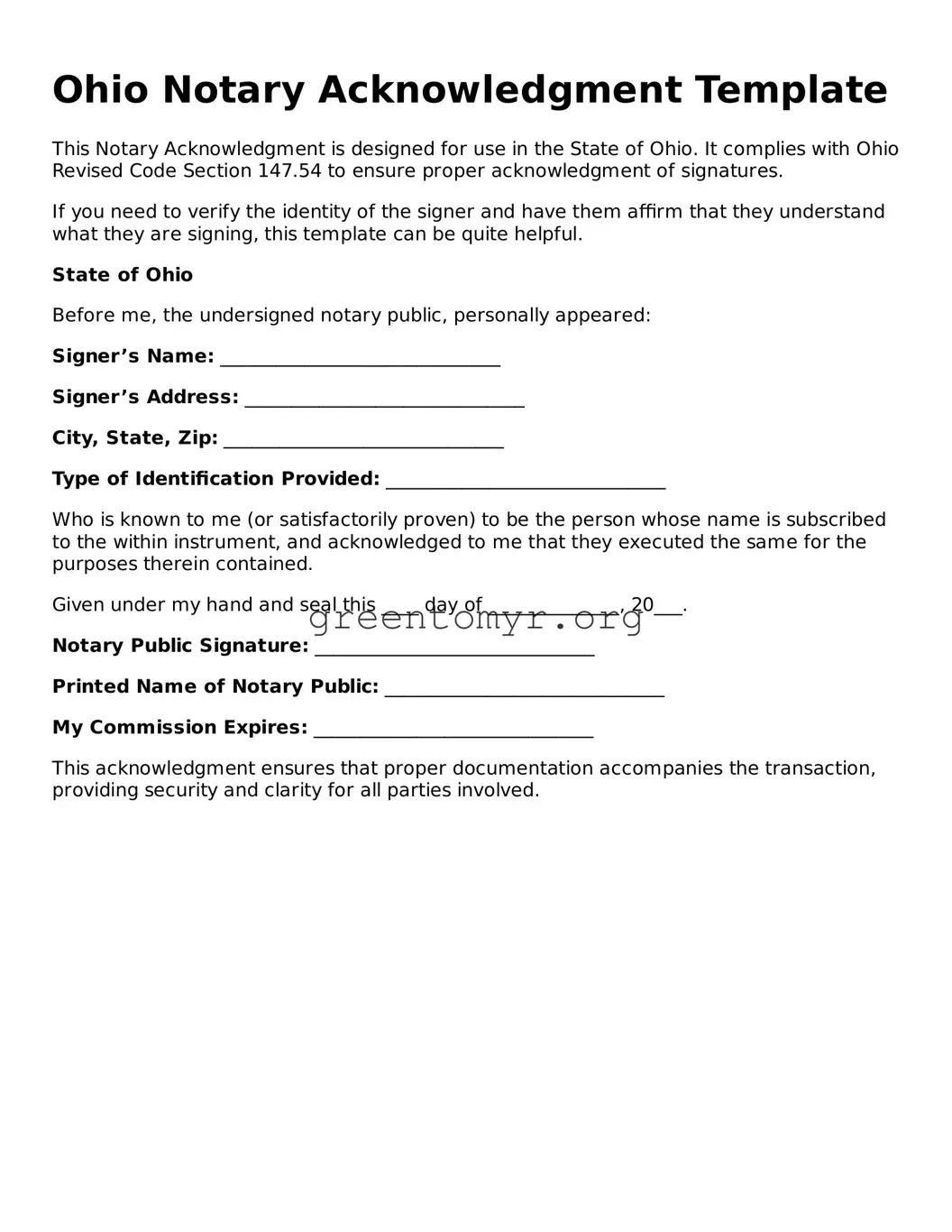Ohio Notary Acknowledgment Template
This Notary Acknowledgment is designed for use in the State of Ohio. It complies with Ohio Revised Code Section 147.54 to ensure proper acknowledgment of signatures.
If you need to verify the identity of the signer and have them affirm that they understand what they are signing, this template can be quite helpful.
State of Ohio
Before me, the undersigned notary public, personally appeared:
Signer’s Name: ______________________________
Signer’s Address: ______________________________
City, State, Zip: ______________________________
Type of Identification Provided: ______________________________
Who is known to me (or satisfactorily proven) to be the person whose name is subscribed to the within instrument, and acknowledged to me that they executed the same for the purposes therein contained.
Given under my hand and seal this ____ day of ______________, 20___.
Notary Public Signature: ______________________________
Printed Name of Notary Public: ______________________________
My Commission Expires: ______________________________
This acknowledgment ensures that proper documentation accompanies the transaction, providing security and clarity for all parties involved.
